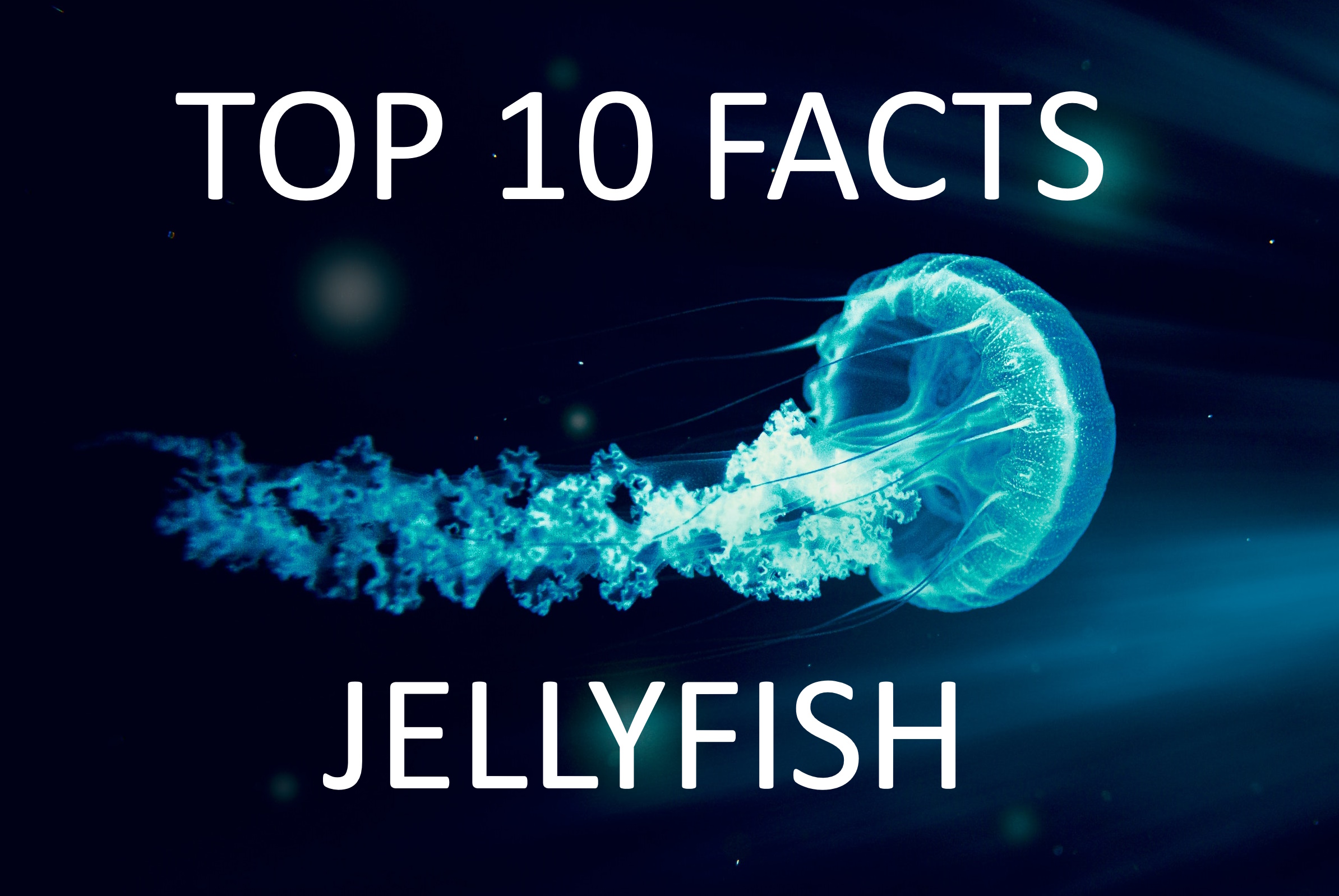By MSc Gvapo Tripinovic and Adam Tripinovic
Hello, and welcome back.
Today Adam and I have prepared for you a new educational article and YouTube video about JELLYFISH.
Did you know that some of them are literally immortal?
In this 10-minute read, we will reveal the secrets of these mysterious creatures that have fascinated scientists and seafarers for centuries, and we still know little about them.
Jellyfish are found worldwide, from the deepest parts of the ocean to the shallowest parts of the coast.
Jellyfish are some of the most intriguing and diverse animals.
There are thousands of different species of jellyfish, so the word “jellyfish” is more of an umbrella term for all of them.
The jelly-like substance they are composed of is known as mesoglea.
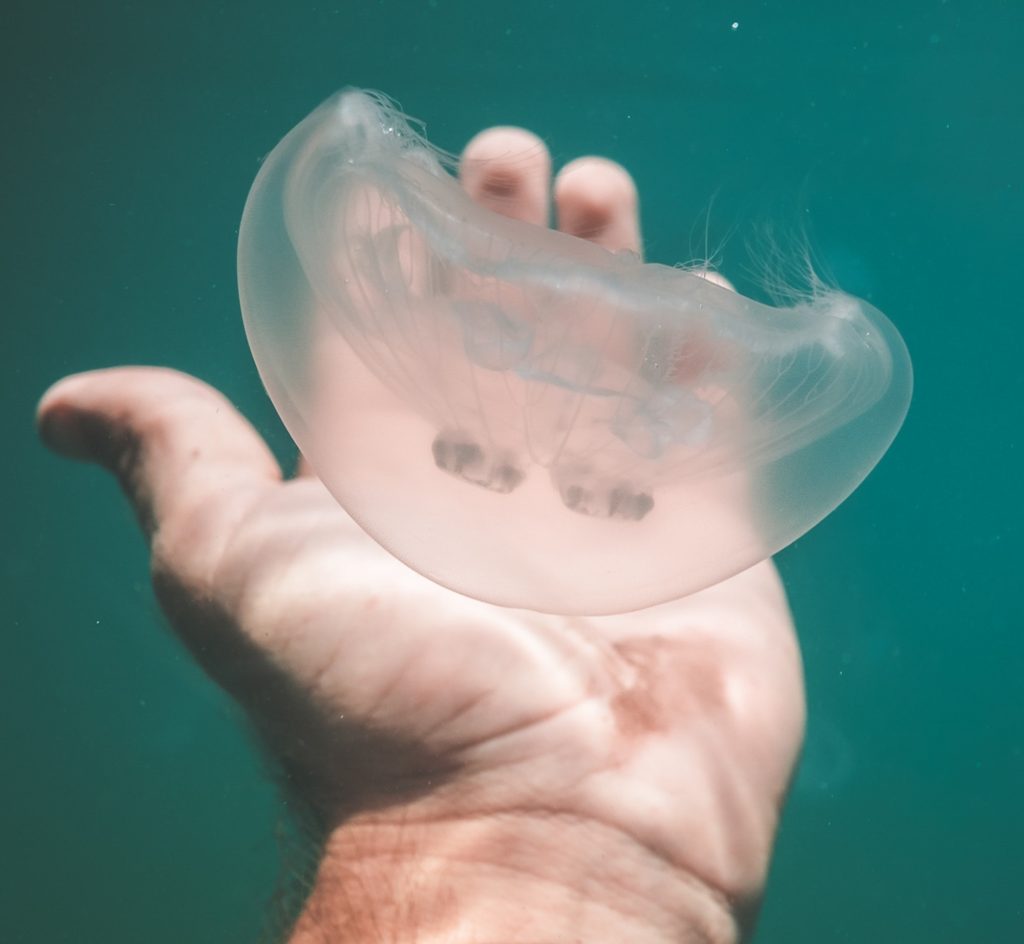
Jellyfish aren’t fish at all.
They are invertebrates, which means they don’t have a backbone.
But even though they don’t have skeletons, their unique, gelatinous bodies help them easily float through the water.
Jellyfish are extraordinarily ancient, dating back over 500 million years. That’s older than dinosaurs! These animals are true survivors and a window into the past.
Jellyfish are capable of regeneration.
If a jellyfish gets injured or loses a tentacle, the part can grow back in a few days. This makes them very adaptable, allowing them to thrive in many different environments.
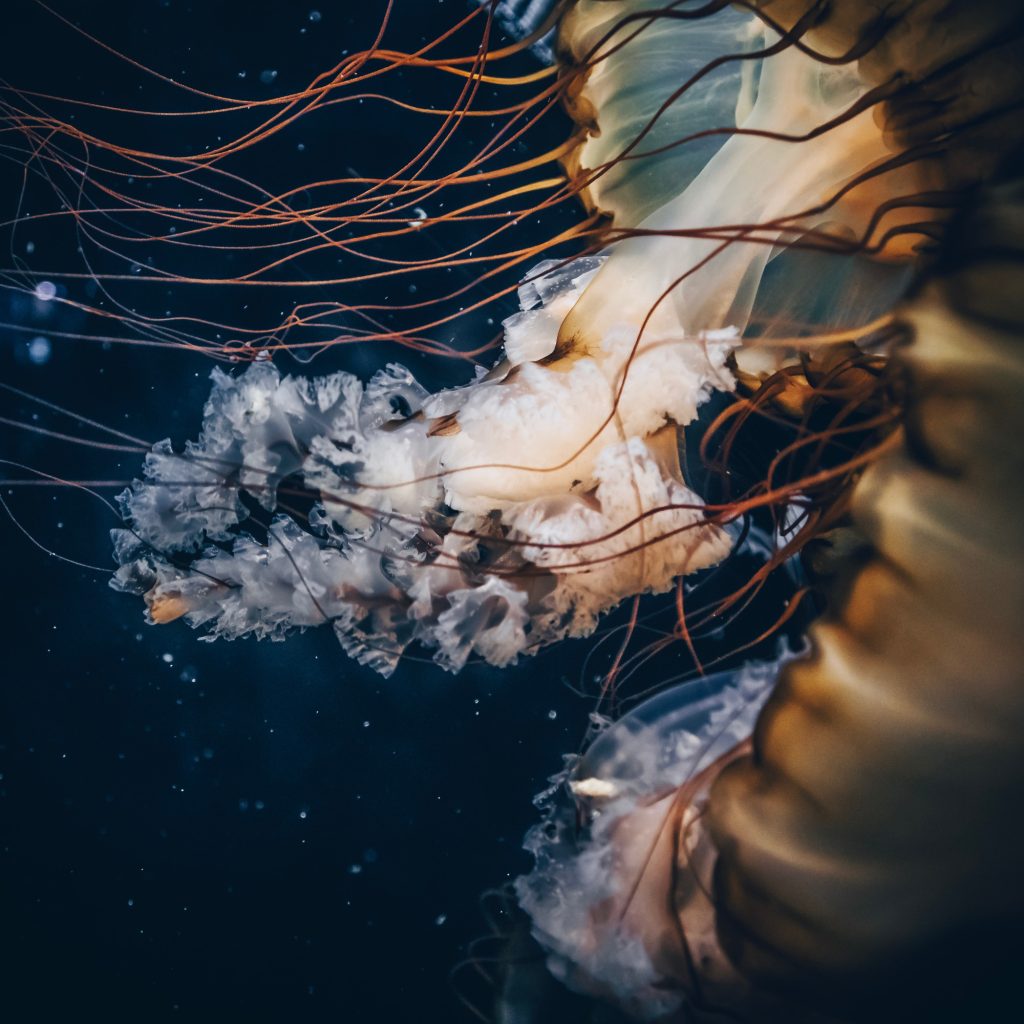
Not all jellyfish sting.
Only about half of jellyfish species have stinging tentacles. Yet many of those who do are incredibly dangerous.
Jellyfish use their stinging tentacles to defend themselves and capture prey.
Here are some of the world’s most dangerous species of jellyfish. Their stings can be life-threatening to humans:
The Australian box jellyfish are the most venomous marine animals in the world. It is found in the waters of the Indo-Pacific region.
Its deadly tentacles can grow up to 10 feet long, lined with thousands of tiny, harpoon-like structures called nematocysts. These structures contain a potent venom that can cause heart failure, paralysis, and even death within just a few minutes.
Another species of jellyfish with a vicious sting is the Irukandji.
Even though it is tiny, its venom is more than 100 times stronger than cobra venom. Its sting can cause severe pain, vomiting, and heart problems; in extreme cases, it can be fatal.
The Portuguese man-of-war is another dangerous species of jellyfish.
The Portuguese man-of-war is a dangerous species of jellyfish whose sting can cause severe pain and nausea. Its tentacles contain a potent neurotoxin that can distress the nervous system and cause heart problems.
In some cases, a sting from a Portuguese man-of-war can be deadly.
The sea wasp is another type of dangerous jellyfish that lives in the Indo-Pacific region.
It has tentacles covered with thousands of nematocysts containing a powerful poison. It can cause heart failure, paralysis, and even death.
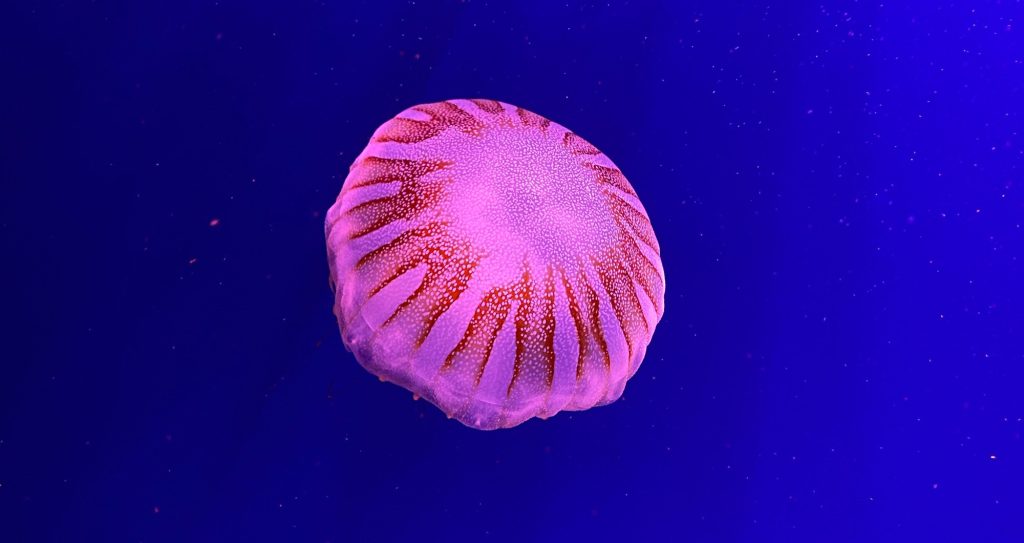
Jellyfish are an essential part of the ocean’s ecosystem.
They are important predators that help keep the numbers of other sea animals in check. They are also food for many bigger animals, such as sea turtles and whales.
Jellyfish have one rare defense mechanism – bioluminescence.
They can produce light, which they use to attract prey, defend themselves from predators, and communicate with other jellyfish. This incredible adaptation has allowed some species of jellyfish to thrive in the ocean for millions of years.
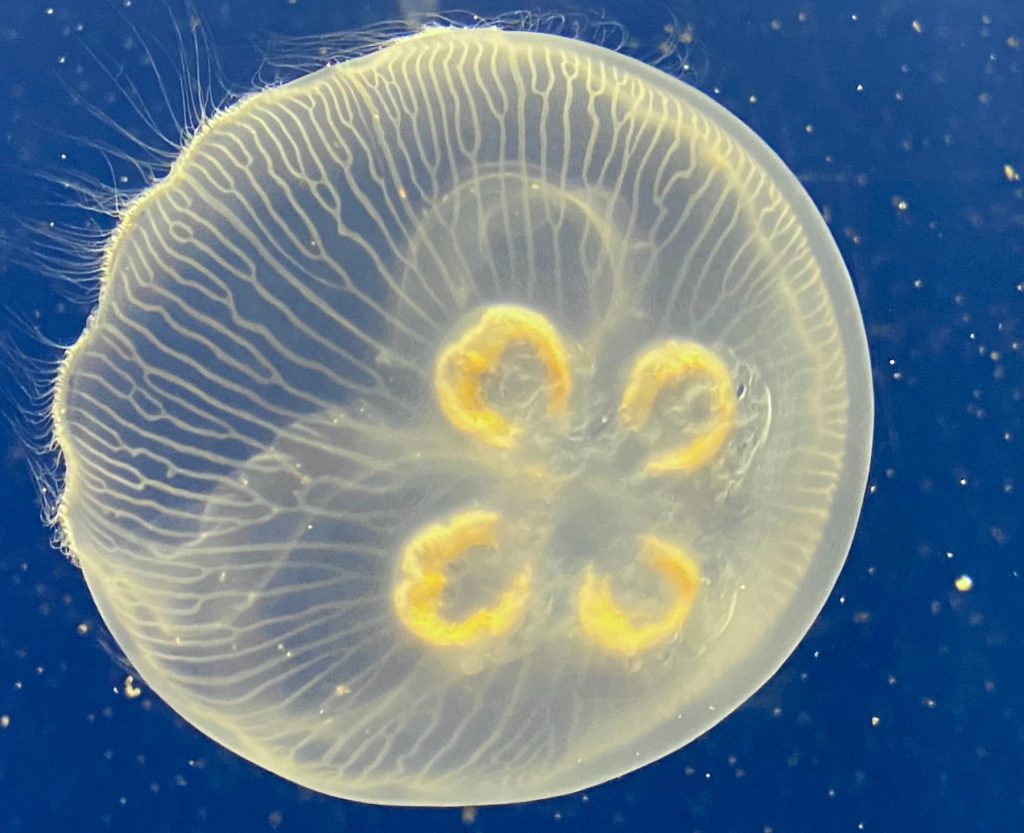
Here are some examples of how jellyfish use this ability to their advantage.
The crystal jellyfish lives in the Pacific Ocean waters. It has a clear, see-through body that helps it blend in with its surroundings. When the crystal jellyfish is in danger, it can quickly change color to look like the seaweed or coral nearby.
The flamingo tongue jellyfish is another species that utilizes its ability to change color to evade predators.
It can be found in the Caribbean sea and is easily recognized thanks to its distinctive pink and yellow coloration.
But when the flamingo tongue jellyfish feels threatened, it can quickly change its color to a more muted brown, making it much harder for predators to spot.
The jelly blubber is a species of jellyfish that is found in the waters of the Pacific Ocean.
The jelly blubber can quickly change from a bright, vibrant color to a much darker one and blend with its surrounding, making it much harder for predators to spot.
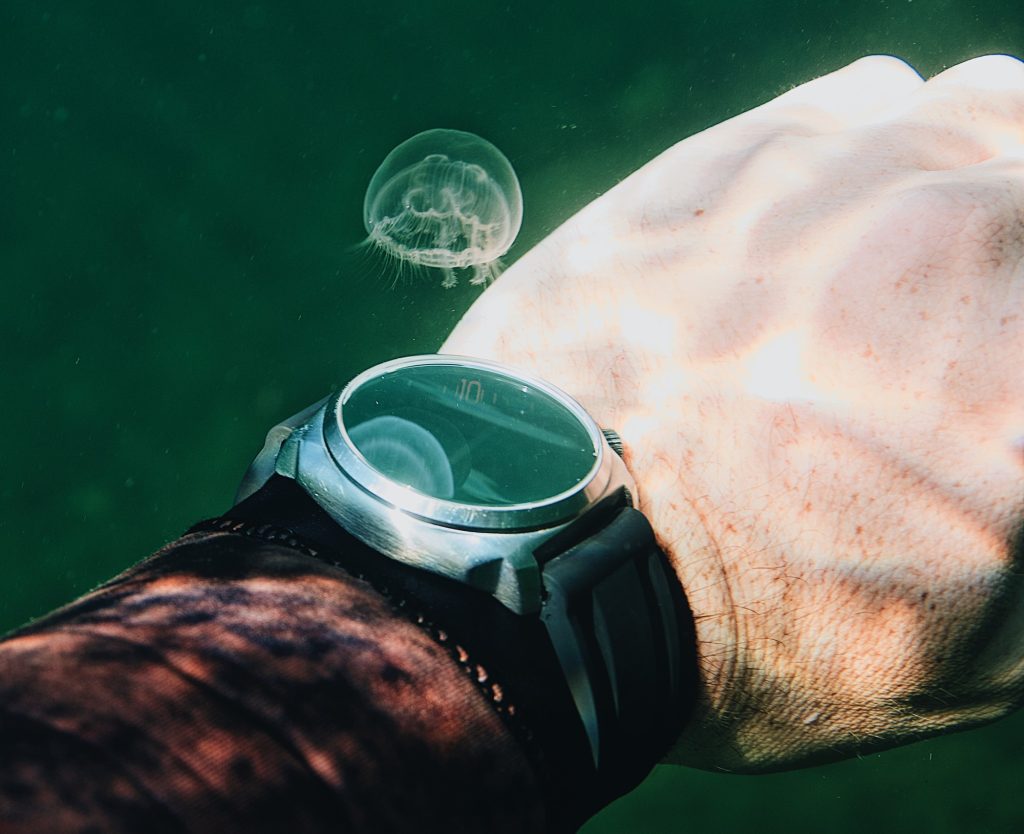
Jellyfish come in a wide range of sizes.
From tiny, no bigger than a fingernail, to huge ones that can be as big as a blue whale.
The world’s most giant jellyfish is the lion’s mane jellyfish.
This ocean giant can have tentacles that span more than 120 feet long (36.5 meters) and a bell that is up to 7 feet (2.1 meters) across. The lion’s mane jellyfish lives in the cold waters of the Arctic and North Atlantic, where it feasts on small fish and plankton.
The Irukandji jellyfish, on the other side, is the smallest.
It lives in the waters of Southeast Asia and Australia. Smaller than a human thumbnail, this deadly jellyfish packs a powerful venom that can cause severe pain and even death.
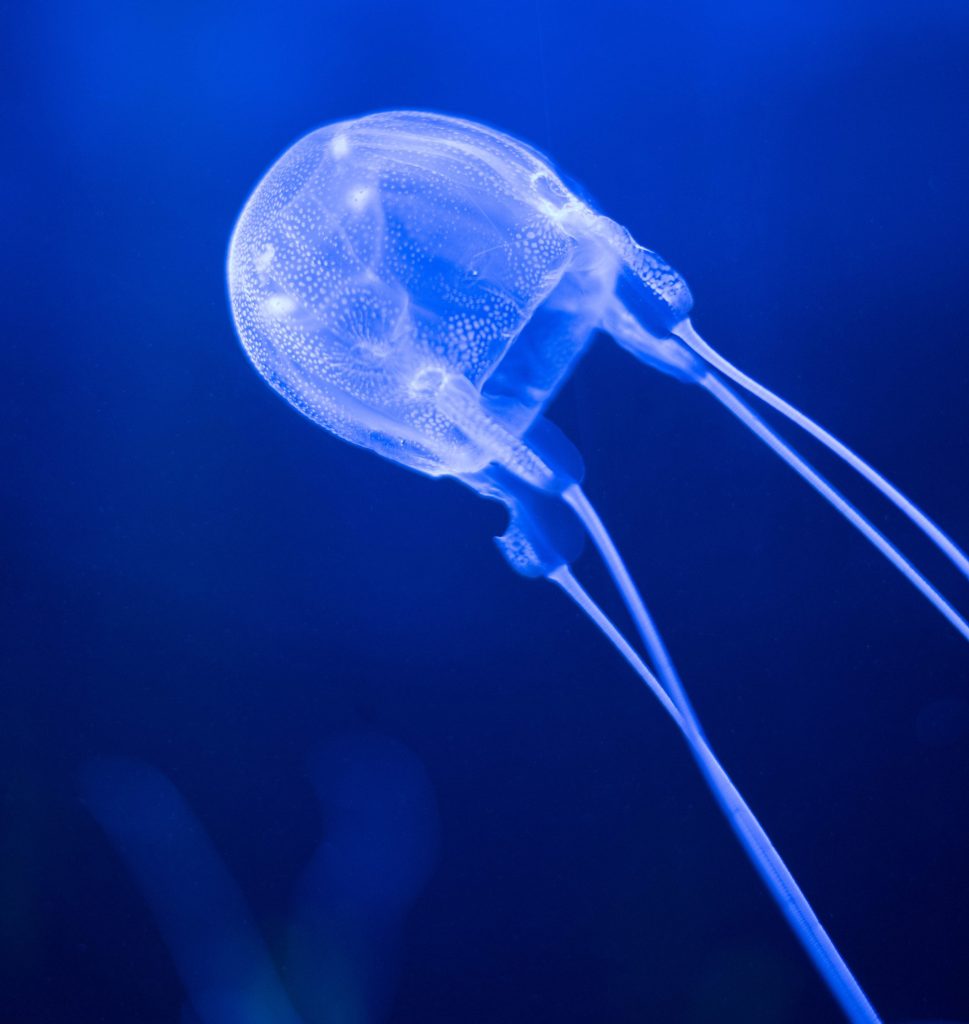
The moon jellyfish is one of the most well-known.
The round, clear body of these animals is often compared to a floating umbrella. Moon jellyfish live in oceans all over the world. They eat feed on copepods and plankton.
Jellyfish move in a unique, pulsing way that lets them swim even though they don’t have muscles.
Instead, they use the movement of their jelly-like bodies to move through the water. Even though jellyfish don’t have a skeleton, they effortlessly float through the ocean.
Their bodies are composed of a soft, translucent substance that is 95% water, making them extraordinarily light and able to glide smoothly in the water.
Due to its high water content, if a jellyfish washes up on the beach, it will almost completely evaporate.
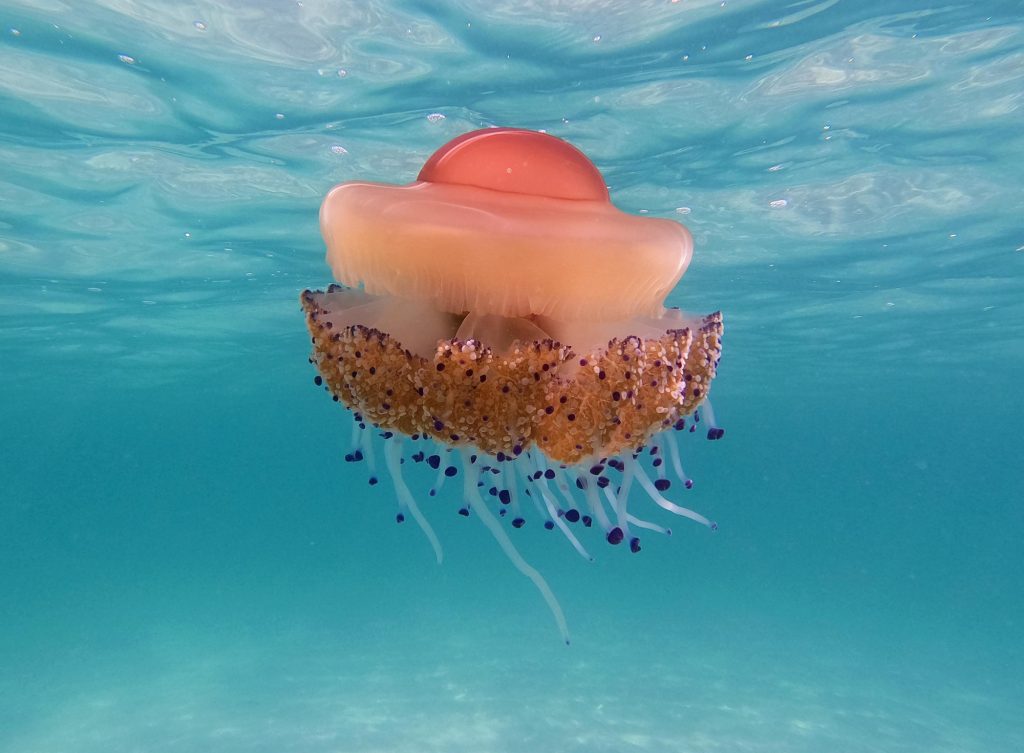
Jellyfish have a bell-like shape that helps them move around.
By contracting and expanding their bell, they can move forward, turn, or stop and float in place. Their ability to move quickly and efficiently is a big part of why they can survive and thrive in the ocean.
For example, the moon jellyfish easily moves through the water, using ocean currents to travel long distances.
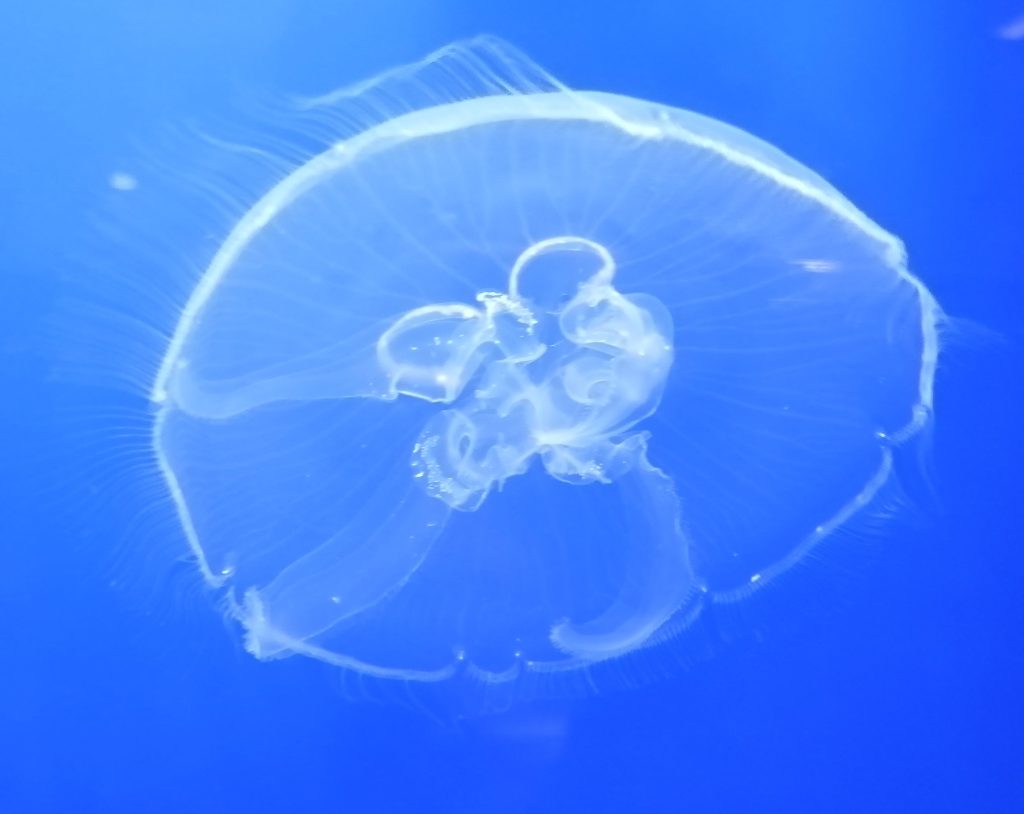
The Portuguese man-of-war is another example. It can use the wind to move across the ocean. It can sail across the water on its gas-filled float while using its tentacles to catch food and avoid being eaten by predators.
And now, drum roll, please. Here’s the most fascinating fact about jellyfish!
Immortality!
The Turritopsis dohrnii carries the title of the “immortal jellyfish.”
This jellyfish can go through a process called “transdifferentiation.”
Under immense stress, an adult or a young one, instead of dying, can turn back into an immature polyp and start the life cycle all over again.
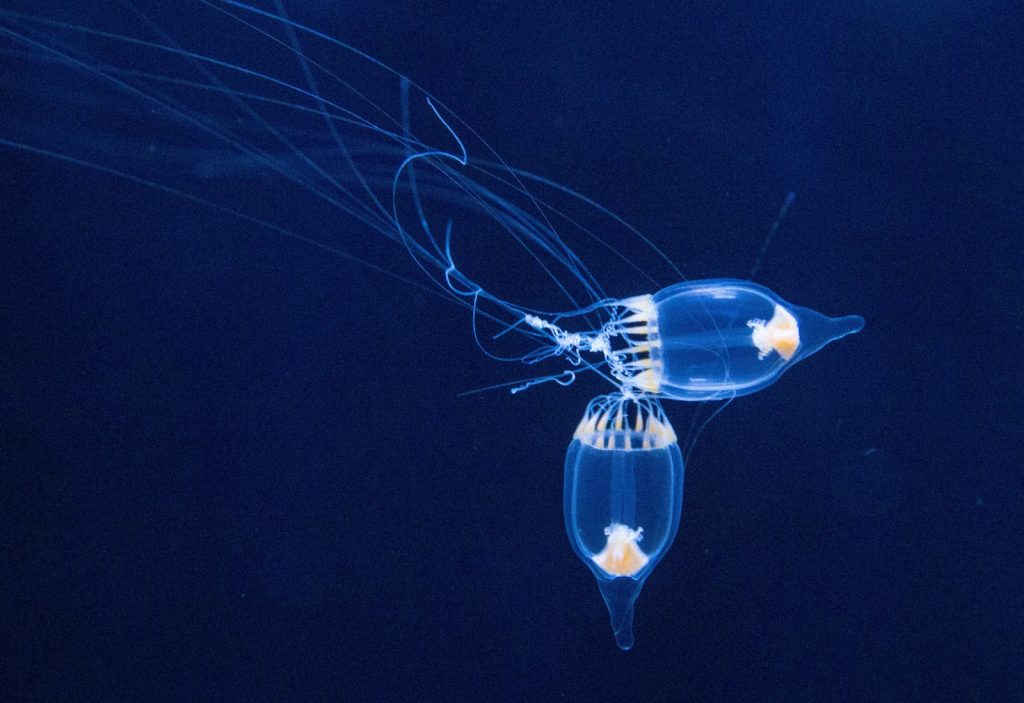
It is the only known animal in the world capable of reversing its life cycle. Instead of dying, the “immortal jellyfish” starts its life again from the beginning.
Groups of jellyfish are known as blooms.
Blooms of jellyfish can form quickly. In extreme circumstances, the jellyfish bloom can become so dense that there are more jellyfish than water in a specific location.
They can be as small as one cubic meter or spread over a vast area, causing significant negative impacts. They can clog fishing gear or cause closing beaches in Australia and Europe.
Since jellyfish are carnivorous, they can decimate plankton, fish eggs, and larvae in the bloom area.
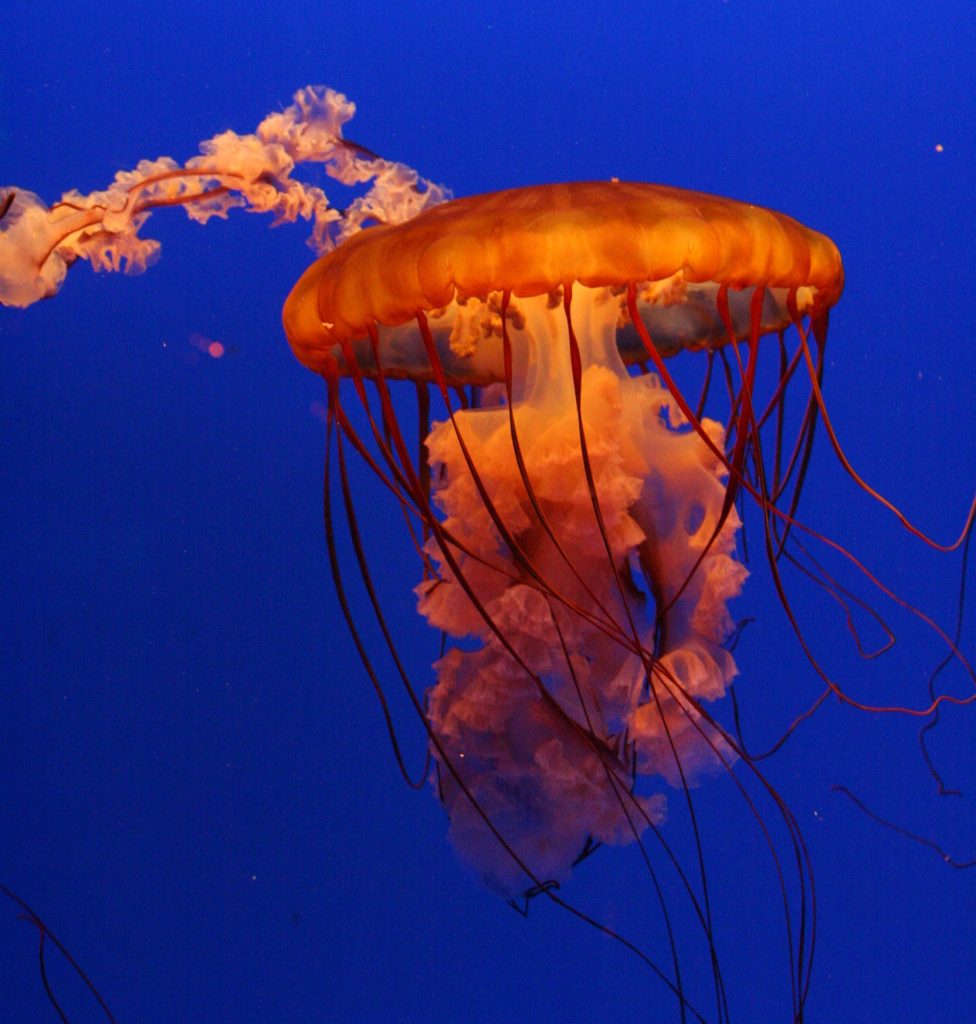
Jellyfish, boneless, brainless, and bloodless, have been around for hundreds of millions of years.
They have thrived and prospered due to their bioluminescent ability, incredible adaptation, and versatility.
Jellyfish have outlived dinosaurs.
Some of them are officially immortal.
Jellyfish, these alien-looking creatures, are here to stay.
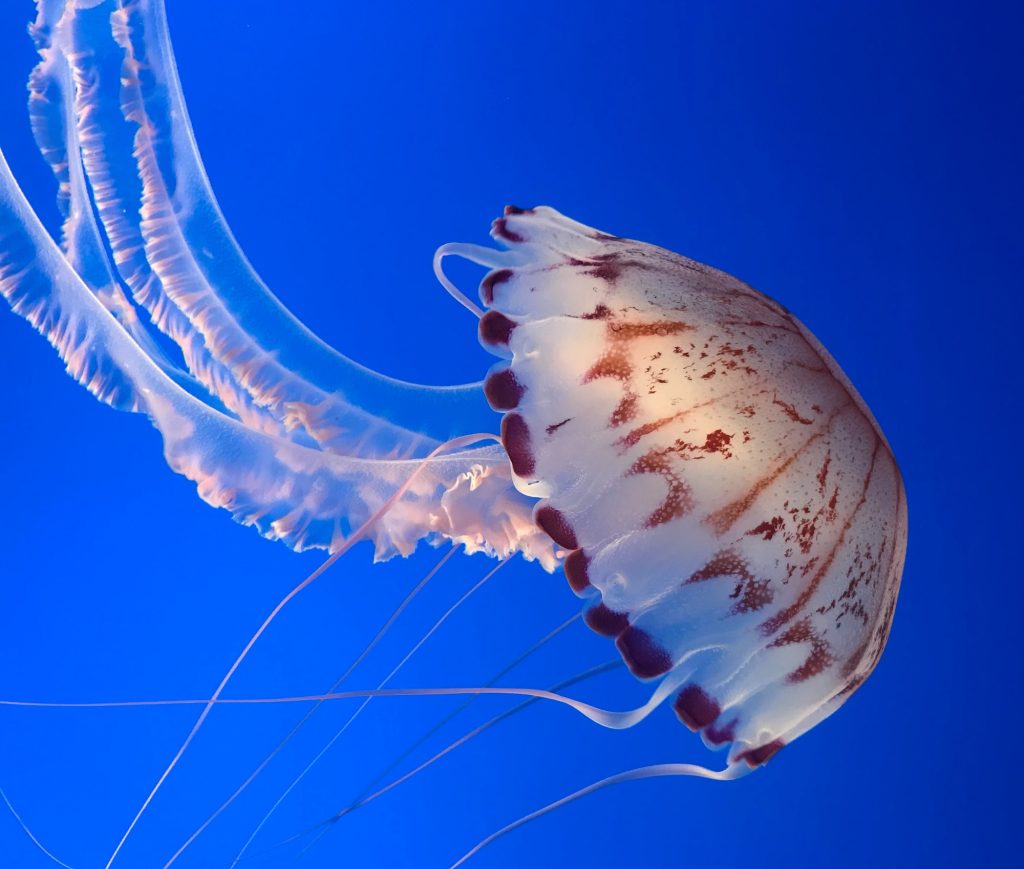
As always, thanks for tuning in!
We hope you enjoyed learning more about jellyfish today, and thank you for visiting our website ParentingDad.
While here, please check some of our other Educational, Active Life and Healthy Food, or How to be a Better Dad – Q & A articles.
If you’d rather watch a video or listen to our articles, check out our YouTube channel, Top 10 Facts.
You can find more great articles and videos about animals here:
Alpacas, Ants Rescue Their Injured Friends, Butterflies, Cheetahs, Dolphins, Do Fish Sleep, Dogs – Which dog breeds are the smartest, Elephants, Great White Sharks, Sharks in aquariums, Snakes, Hummingbirds, Jellyfish, Lions, Pigeons, Red Pandas, Owls, Seagulls, Snails, Squirrels, and Wolves.
If you found this ant rescue story fascinating, be kind and share it with your friends.
And remember to return to our blog ParentingDad.com for more incredible insights into the fascinating world of nature.
Until next time, keep exploring and appreciating the wonders of our planet!
Adam and I wish you a great day. Stay well, and keep smiling.
Keep being curious and asking questions!
This article might contain links to the products, so we can get a small commission if you buy them. That way, you support this blog and our educational YouTube channel, for which I am thankful.
